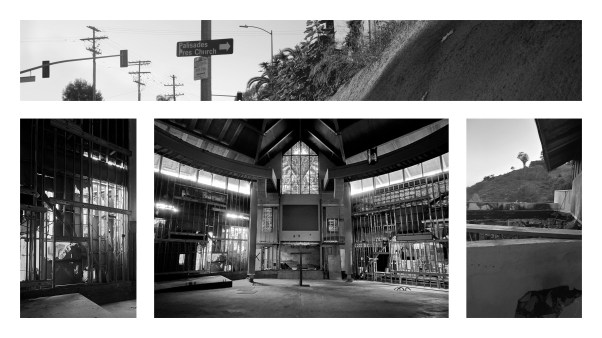Wrestling with Christian faith—questioning, doubting, reforming, and even falling away from it—has been part of the Christian tradition as long as there’s been a Christian tradition. Christianity asserts some big claims about the world, and a healthy faith can mean wrestling with these claims at some point along our faith journey. The result can be a more robust faith, even if it is a somewhat reformed faith.
The Deconstruction of Christianity: What It Is, Why It’s Destructive, and How to Respond
Tyndale
304 pages
$13.12
But this is certainly not how it goes for everyone. Sometimes one can’t get past an objection that calls the truth of Christianity into question. Other times, living by ethical claims that run counter to current cultural norms proves too heavy a burden. Sometimes the sheer audacity of the claims of Christianity leads people to dismiss them as unbelievable and unserious. And then there’s the presence of scandal and abuse within the ranks of church leaders. With church-related trauma all too common these days, some people simply want out.
These experiences, often lived out on social media and other online channels, travel under the banner of faith deconstruction. Deconstruction is one of those terms that feels familiar, even if most people know little about its roots. While it began as a term of art with 20th-century postmodern philosopher Jacques Derrida, I suspect most faith deconstructions aren’t being informed by a study in Derridean semantic theory! Today, deconstruction may refer to a wide variety of experiences.
To help with the confusion, Alisa Childers and Timothy Barnett offer their new book, The Deconstruction of Christianity: What It Is, Why It’s Destructive, and How to Respond. As their subtitle makes clear, Childers and Barnett take a critical stance toward the deconstruction movement. Their tone is decisively polemical toward what they identify as a grave danger facing the church.
Two potential misunderstandings
Before going further, it’s worth highlighting a couple ways the book might be misunderstood. First, it is not primarily a book for those going through deconstruction. As the authors stipulate, its primary audience is “Christians who are experiencing deconstruction from the outside.” The book, then, is written for those who are watching someone else, perhaps a family member or a friend, go through deconstruction. And the authors hope we might be equipped to watch and potentially guide that process in fruitful ways.
The second possible misunderstanding has to do with the target of the book’s criticism. Childers and Barnett have a rather narrow focus. This is seen in their definition of deconstruction. They say, “Faith deconstruction is a postmodern process of rethinking your faith without regarding Scripture as a standard.”
Those who see deconstruction in a more positive light probably won’t appreciate this definition. One might even see the book’s criticisms as aimed at a straw man that doesn’t resemble one’s own experience of doubting or questioning Christian faith. But this could be because the book isn’t aimed at addressing every possible variety of deconstruction.
As I understand the authors, they don’t have in mind someone who merely doubts the truth of Christianity, or even someone who is abandoning the faith after evaluating it on the basis of the evidence at hand. Instead, they are responding to those who use subjective standards—what they call a postmodern process—to come to views that align with cultural norms rather than biblical norms. While this may not be everyone’s form of deconstruction, the authors argue that it is (all too) common and support this claim with a raft of statements from leading voices in the deconstruction movement.
Truths of fact and preference
Childers and Barnett make use of an analogy made famous by the ever-prescient 20th-century theologian Francis Schaeffer. Schaeffer imagined a two-story building to illustrate two different kinds of truth.
On the lower story, we have objective truths, such as those found in science and mathematics. You would operate in a lower-story framework if, for instance, you were constructing a bridge, fixing your automobile, or doing your taxes—all tasks that can’t be completed without reliance upon objective facts. On the upper story, however, we have the truths of preference and what we take to be personally meaningful. Within the upper story, you might give opinions on your favorite ice cream, how someone should decorate their house, or what you personally find inspirational.
In sum, lower-story truths are facts made true by the way the world is, whereas the upper story is composed of subjective truths that are, in a sense, up to us and our preferences.
In many deconstruction stories, argue Childers and Barnett, lower-story truths play a minimal role. In other words, we see little concern for evidence that either does or does not substantiate the truth of Christian claims. Instead, we often hear assurances that one had to follow one’s heart or be true to oneself.
In a related vein, deconstruction narratives sometimes report a process of discovering that certain Christian doctrines are toxic or oppressive. It’s often quite unclear what makes a claim toxic or oppressive, and in many cases the accusation amounts to an expression of subjective distaste. But this shifts the claims of faith from the lower story to the upper story. If a particular flavor of ice cream is distasteful, then by all means reject it. But this doesn’t work so well for lower-story matters like medical diagnoses. The truth about one’s medical condition might be quite unpleasant to hear, but it would be foolish to reject the bad news simply for its undesirability.
Connecting this theme to the Christian faith, Childers and Barnett acknowledge that we may find some parts of it distasteful. But such evaluations, they argue, should take a back seat to considerations of objective truth and falsehood. Just like a medical diagnosis, what ultimately matters is whether the claims of Christianity correspond to reality.
Recovery or ‘improvement?’
It is sometimes said that the deconstruction movement is an extension of the Protestant Reformation. After all, reformers like Martin Luther rejected key doctrines professed by the church. Seen in this light, Luther was deconstructing the faith long before there were any YouTube and TikTok channels.
Childers and Barnett see little affinity between the Reformation and the contemporary phenomenon of deconstruction, as they’ve defined it. The thrust of the Reformation was a return to biblical fidelity. Proponents of deconstruction, on the other hand, seek to “‘improve’ [Christianity] according to their own personal beliefs and preferences rather than to recover the original, which they feel is harmful or oppressive.”
The authors admit that there are “many areas where the church has lost its way.” But even if people have legitimate concerns, this calls for a spirit of reformation, oriented toward the recovery of biblical truth rather than an impulse for wholesale deconstruction.
Childers and Barnett make the point that virtually all deconstruction stories mention the place of questions in launching the deconstruction journey. Questions should be encouraged, they emphasize, and they chide Christians who give overconfident and pat answers or, worse, no answers at all. But we have to be mindful of where the questions are coming from and what their askers might be seeking. As the authors observe, “Some questions seek answers, and some questions seek exits.” They advise taking care to discern where people are in the deconstruction process and assessing their readiness for substantive conversations about faith. Where we see that readiness, we engage their questions as best we can.
What comes next
Childers and Barnett are primarily focused on deconstruction. But deconstruction is a fundamentally negative project. When we deconstruct, we take something apart. What good does that something provide when it lies before us in pieces? At some point, we will replace our deconstructed view with another view about reality and the good life.
While there are a lot of ways, both good and bad, to take something apart, I’d suggest that a more important focus is the process of putting it back together. I fear that in all our discussions about deconstruction, we lose sight of what to do in light of the beliefs we’ve discarded.
To be clear, there are some really ill-advised ways to rethink our faith, and The Deconstruction of Christianity does a worthy job of highlighting them. Unfortunately, people can sometimes blow up their faith in ill-advised ways. Rethinking one’s faith can be an emotionally charged experience, and for some, it will be difficult—if not nearly impossible—to do it in a very principled way. So it’s going to get messy.
What comes next, though, is what’s crucially important. Now that we’ve called it all into question, what will we believe? How will we go about determining it? Will we be as tough on our new view as we were on traditional Christianity? Or will we just accept uncritically whatever is culturally fashionable? Deconstruction may be difficult and painful for many reasons, but the hardest work lies in what comes next.
Travis Dickinson is professor of philosophy at Dallas Baptist University. His books include Wandering Toward God: Finding Faith amid Doubts and Big Questions.










